Planting tomatoes
This week being the First Quarter Moon phase we have planted our tomatoes.
I’ve decided on 4 ‘Roma’ to make relish and sauces; 3 cherries – 1 red, 1 yellow, 1 black; and 1 ‘Moneymaker’ for salads and sandwiches. Quite basic, but since we’re just getting established, we’re not going wild with the varieties.

The plants have been growing solidly. In the last week the new growth has looked a bit yellowish and Rob says that means they’ve used up the goodness in the soil in their pots and need to be planted in the ground.
I got some old waratahs from Rob (1.8m long) for the stakes and with this amazing tool loaned from Rob, my son Harry (the photographer and Photoshopper on this journey – under a bit of duress!) and I knocked them in 400mm into the ground. Crikey it was efficient – in most cases it took just one knock.
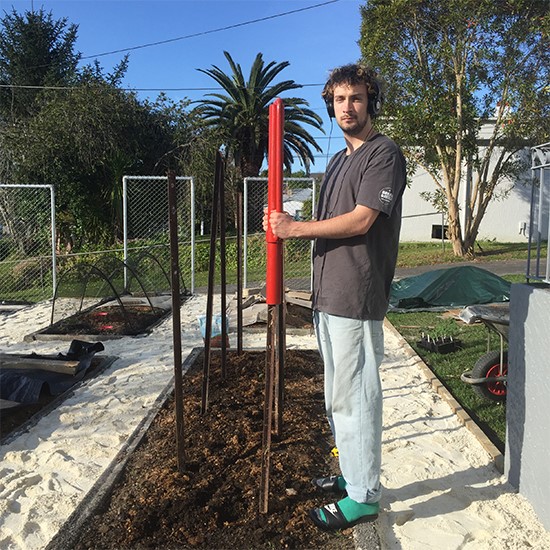
A bit of a work through the soil with the fork, then good deep holes as the deeper you plant your tomatoes, the bigger the root ball they form (doesn’t matter if you bury a few of the leaves).
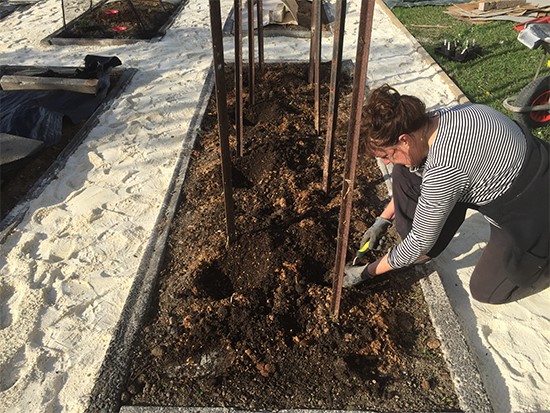
Here are the additives we recommend to have on hand when planting tomatoes…
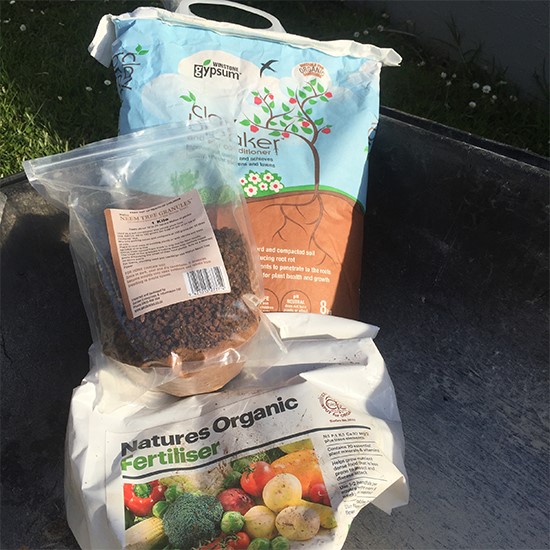
Firstly I put in a handful of gypsum for calcium – calcium is super important for good cell formation in fruiting plants. If they lack calcium, the fruit can form blossom end rot. I also add neem granules as all the solanum family can fall prey to psyllids (neem is taken up by the plant systemically and repels the pests).
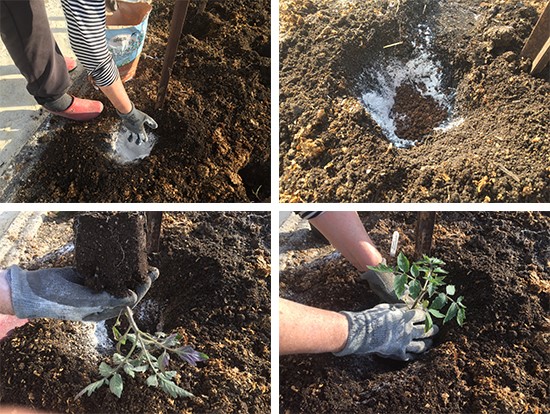
Then in go the plants and we finish off with a ring of rock dust round them and water it all in.
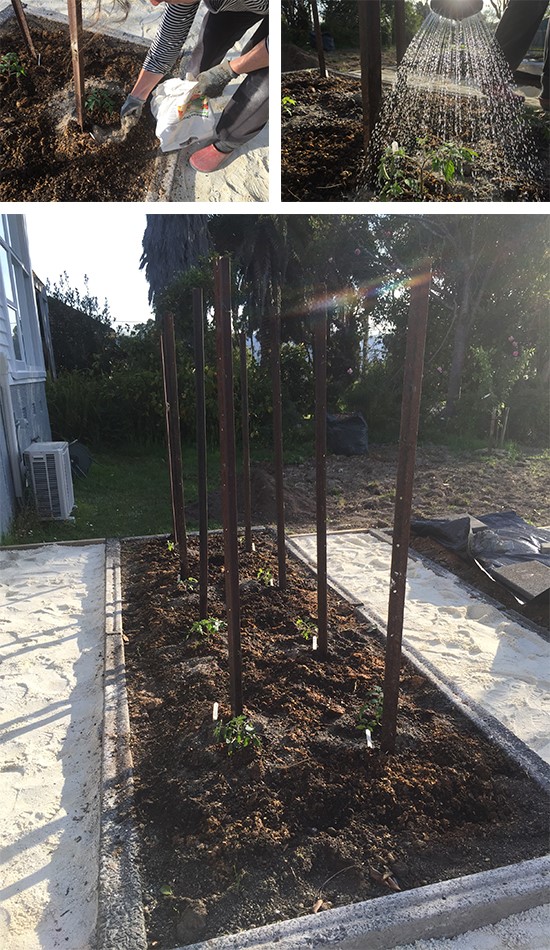
At this stage we won’t net the plants. They are unlikely to be appetising to slugs and snails at this size, so we’ll cover them once we get the companion plants of basil and marigolds in and after we delateral the plants. All of that will happen before the fruit forms, which is when netting is important – to keep the birds off!
There’s a big window to plant tomatoes in – now might not be right for you. Have a look at this page to find information for whatever stage you’re up to with your tomatoes.
Potato progress
Speaking of solanums, our potatoes have sprouted and poked their heads above the ground.
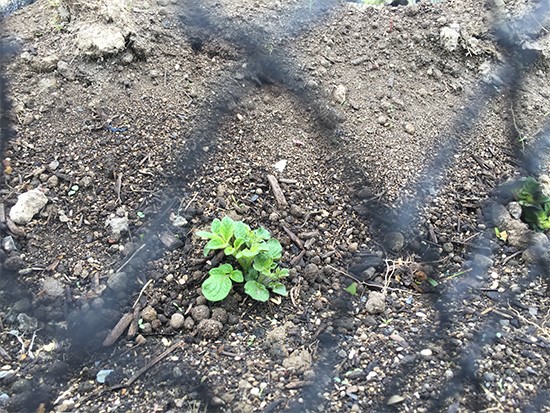
Rob’s comfrey plants are producing now, so while the potato plants are still a bit small, I’ll just lay the comfrey leaves round them and allow them to die off. This ensures there are no comfrey roots that are likely to take hold. Once the leaves have dried off, the potato plants will be a bit bigger and we can cover them over (hill them up – not completely though – leave a bit of green poking out).
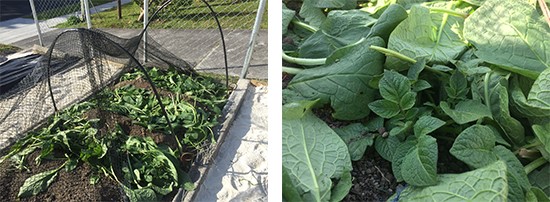
I’ve also planted a bit of Rob’s comfrey at the foot of the plum and apple trees.
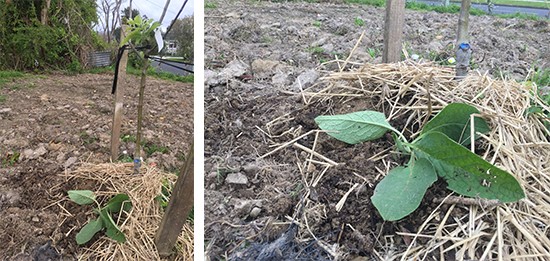
This is Russian Bocking 14 Cultivar comfrey and the seeds are sterile which is important otherwise we’d be known as Comfrey Farm. The roots do take hold and will multiply if disturbed, but the value of comfrey for encouraging fruiting and providing nutrition for the bees and beneficial insects outweighs any disadvantages.
Slugs and snails
The slugs and snails have attacked the turnips. You might not be able to see it here, but there’s definitely the telltale silvery slimey residue on the leaves.
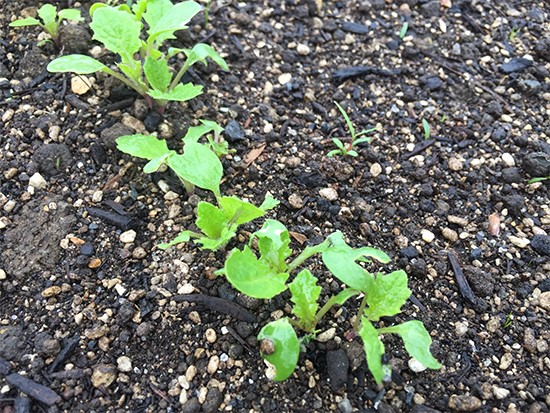
I’ve created a trap with an upturned pot with newspaper inside to create a home for them during the day and I’ve made sure there’s an opening for them to crawl inside when it gets light. This morning I checked and nothing. I’ll keep up my daily check.
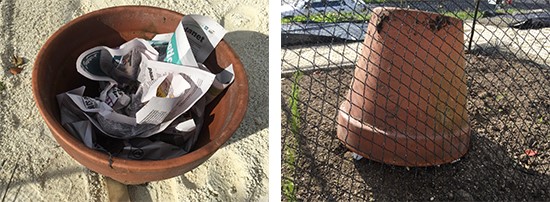
Germination – good and bad
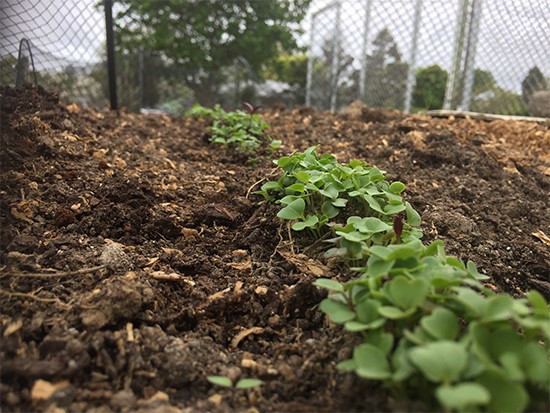
The mesclun (above) is up, but my carrots are a disappointment. The towel didn’t seem to work at all, which it usually does, so I’m thinking it was definitely the seeds. As I said, carrots are the trickiest crop to germinate and the freshness of the seeds is the main reason for success or failure. I think there’s enough there not to have to re-sow with a new packet, but it’s not what I was hoping for. The parsnips are even showing themselves, which is unusual as they usually take ages to germinate.
Seed sowing
I’ve also sowed seeds for corn, zucchini, pumpkin, cucumber and watermelon. As the seeds are so big I’ve just put individual seeds straight into the big pots and into the 6-pack recycled containers I would normally transplant into. It’s tempting to re-use it, but I always use fresh seed raising mix (see here for how to make it) just in case there’s any possibility of transferring a disease.
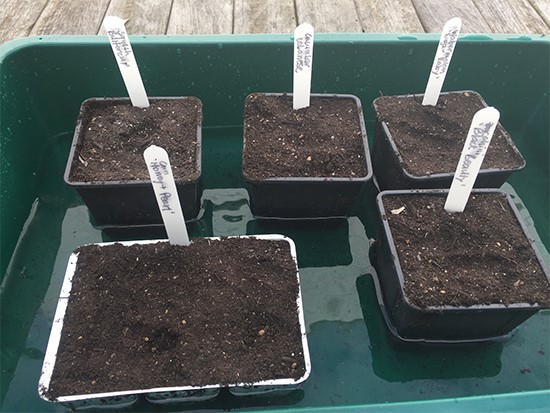
The borage plants are planted in the insectary bed, and the parsley is in too.
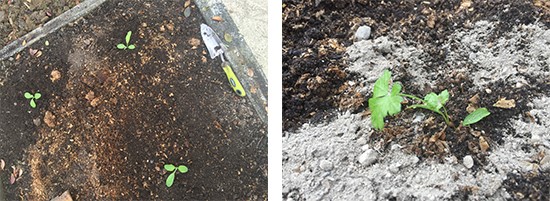
Beans
And lastly, BEANS – time to sow beans while we still have the First Quarter moon phase. Few technical issues here around the bean structure, otherwise I would have mine in too, but life often gets in the way of gardening in the right moon phase!
Hope it’s all going well at your place!
From Jan, Rob and the Team at OEG!
Website designed by www.thecornerstorecollective.com
Developed by Richard Hpa
5 Responses
Hi, Thank-you for another informative blog.
question: You mention “rock dust” whenever you plant, I looked for it at a couple of plant “shops” recently visited but was unable to spot it. Is there another name for it please?
Regards
Peter.
Hi Peter
Environmental Fertilisers in Paeroa make a product called Natures Organic Fertiliser which is a certified organic blend of phosphate rock, humic acid, seaweed, vermicast and paramagnetic basalt rock dust. Kings Plant Barn in Auckland sell it, otherwise we do on our site here… https://organicediblegarden.co.nz/shop/organic-fertiliser/ We swear by it for adding vitamins and minerals to the soil that are vital for good health..
Hi, thanks for that reply. We are in the South Island, will check out local garden outlets and hope to find a supply.
regards
Peter.
Hello! thanks for sharing. my question is, Can i use that in my country ? Where i can get that tools ? Ot is that just like an iron bar ?
Hi there We call them waratahs (in other countries they’re called T-posts or Y-posts) and they’re usually used for fence posts through which wire is threaded. These ones are iron which have rusted. New ones would be galvanised or have some other coating to stop the rusting.